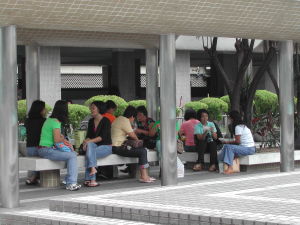The Plight of the Philippines’ Enslaved
 This week, the Walk Free Foundation reported that the Philippines has the 19th largest population enslaved through forced prostitution, involuntary servitude forced labour, child soldiery, and removal organs. In addition, the 2014 Global Slavery Index estimates that over 261,200 Filipinos - 0.26% of the country’s population - are subject to some form of modern slavery. The Philippines is also ranked 19th in the Asia Pacific region for the “vulnerability of its population to be trapped in slavery.” "Most countries in the Asia Pacific region exhibit a range of preconditions to modern slavery, including weak rule of law, corruption, high levels of poverty, and crippling unemployment," the study stated.
This week, the Walk Free Foundation reported that the Philippines has the 19th largest population enslaved through forced prostitution, involuntary servitude forced labour, child soldiery, and removal organs. In addition, the 2014 Global Slavery Index estimates that over 261,200 Filipinos - 0.26% of the country’s population - are subject to some form of modern slavery. The Philippines is also ranked 19th in the Asia Pacific region for the “vulnerability of its population to be trapped in slavery.” "Most countries in the Asia Pacific region exhibit a range of preconditions to modern slavery, including weak rule of law, corruption, high levels of poverty, and crippling unemployment," the study stated.
Geographical Vulnerability
Located on an active typhoon belt, the Philippines is particularly prone to natural disasters. In 2013, Typhoon Haiyan displaced over 340,000 people and wrecked homes, schools, and public infrastructure throughout the islands of Leyte. The typhoon has been reported to have directly contributed to at least two trafficking events.
Young children are especially vulnerable under such circumstances. According to missionary Shay Cullen, “Under the pretext of saving or taking care of children, traffickers kidnap them and sell them to pedophiles. Or they earn large sums of money by providing the children for illegal adoptions. Even worse, they introduce them into the world of prostitution, making them slaves of sexual exploitation.”
Slavery That Transcends Borders
Modern slavery exists in different forms in the Philippines, but forced labour overseas is the most prevalent form. The International Labour Organization (ILO) estimates that annually, one million Filipino men and women migrate overseas for work opportunities, with 10 million Filipinos currently living and working abroad.
One in every two female overseas Filipino workers (OFWs) is an unskilled worker employed in the domestic, cleaning, and/or service industries. OFWs are subject to slave-like labour conditions throughout the Middle East and Asia, with many reporting confiscation of passports, long periods without pay, verbal and physical abuse, and involuntary sexual servitude. In 2013, the Philippines Overseas Labour Office of Qatar sheltered more than 600 runaway maids.
Earlier in the year, a primary school textbook in Hong Kong that illustrated a dark-skinned Filipina stating, “I am a Filipino. I am a domestic helper in Hong Kong,” caused much uproar among netizens.
Preventing Modern Slavery
Currently, fifteen multi-agency Filipino workers’ resource centers exist to assist workers in 36 countries with populations of over 20,000 Filipino workers. Additionally, Filipino emigrants are required to register with the Commission on Filipinos Overseas, with collected information being used to develop programs and policies.
Despite these significant efforts, the annual United States Trafficking in Persons Report still cites that the Government of the Philippines does not “fully comply with the minimum standards for the elimination of trafficking.”
In response to the 2014 Global Slavery Index reports, Valenzuela City Rep. Sherwin Gatchalian discussed the importance of education in eradicating modern slavery in Philippines. The lawmaker observed how most Filipino workers are high school dropouts, making them more vulnerable to modern slavery. "The government also needs to create more job opportunities for women with families so they need not go abroad for work just to perform their duty to help in the household's finances. The government can do so by stepping up its efforts in drawing foreign direct investments," Gatchalian said.
Modern slavery in the Philippines is a multifaceted issue that can only be gradually mitigated. A combination of policies and collaborations should be made to attack the issue at its core and ensure long-term eradication.
